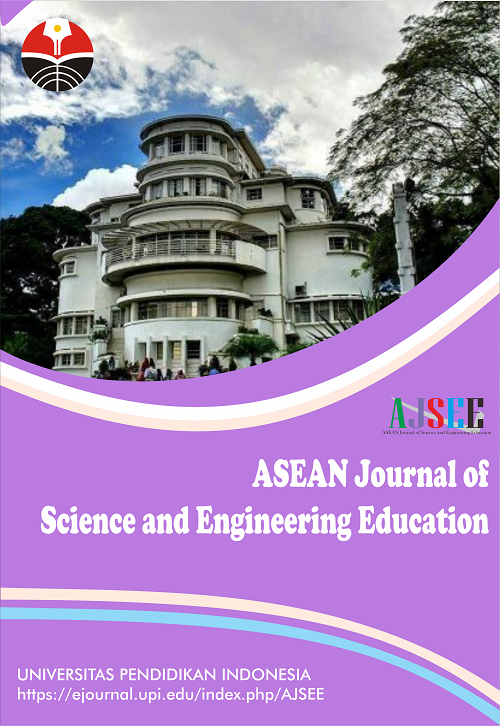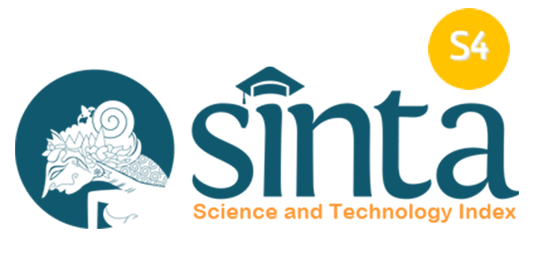Interactive Multimedia Design of Motion Graphics Using a Project-Based Learning Approach for Vocational Education Students: Experiments in Cooking Taliwang Chicken
Abstract
Keywords
Full Text:
PDFReferences
Al Husaeni, D. F., Budisantoso, E. N. Q., Urwah, M. A., Azizah, N. N., Dinata, P. Z., Apriliany, S., and Siregar, H. (2022). The effect of using web-based interactive learning media for vocational high school students to understand looping: Qualitative approach. Journal of Science Learning, 5(1), 115-126.
Ali, S. B., Mursalin, M., and Buhungo, T. J. (2023). Validity of problem-based learning tools with the steam approach to improve student learning outcomes on thermodynamics material. Jurnal Pijar Mipa, 18(5), 743-746.
Alobaid, A. (2020). Smart multimedia learning of ICT: role and impact on language learners' writing fluency—YouTube online English learning resources as an example. Smart Learning Environments, 7(1), 24.
Ariyanti, D. (2020). Ispring suite based interactive multimedia 8. Journal of Education and Development, 8(2), 381–381.
Bin Mubayrik, H. F. (2020). New trends in formative-summative evaluations for adult education. Sage Open, 10(3), 2158244020941006.
Budakoğlu, I. İ., Coşkun, Ö., and Özeke, V. (2023). e-PBL with multimedia animations: design-based research. BMC Medical Education, 23(1), 1-11.
Darling-Hammond, L., Flook, L., Cook-Harvey, C., Barron, B., and Osher, D. (2020). Implications for educational practice of the science of learning and development. Applied Developmental Science, 24(2), 97-140.
Dede, C. (2010). Comparing frameworks for 21st-century skills. 21st century skills: Rethinking how students learn, 20(2010), 51-76.
Fitriani, W., Abdulah, A., and Mustadi, A. (2021). The use of PBL-based interactive multimedia to develop student science process skill. Jurnal Pendidikan dan Pengajaran, 54(1), 150-159.
Fuady, R., and Mutalib, A. A. (2018). Audio-visual media in learning. Journal of K6 Education and Management, 1(2), 1-6.
Gezim, B. A. R. A., and Xhomara, N. (2020). The effect of student-centered teaching and problem-based learning on academic achievement in science. Journal of Turkish Science Education, 17(2), 180-199.
Gómez-Pablos, V. B., del Pozo, M. M., and Muñoz-Repiso, A. G. V. (2017). Project-based learning (PBL) through the incorporation of digital technologies: An evaluation based on the experience of serving teachers. Computers in Human Behavior, 68, 501-512.
Gunawan, G., Harjono, A., Herayanti, L., and Husein, S. (2019). Problem-based learning approach with supported interactive multimedia in physics course: Its effects on critical thinking disposition. Journal for the Education of Gifted Young Scientists, 7(4), 1075-1089.
Hadisaputra, S., Gunawan, G., and Yustiqvar, M. (2019). Effects of Green Chemistry-Based Interactive Multimedia on the Students' Learning Outcomes and Scientific Literacy. Journal of Advanced Research in Dynamical and Control Systems (JARDCS), 11(7), 664-674.
Hariyadi, A., and Yanti, D. R. (2019). The importance of needs analysis in materials development. Jurnal Ilmiah Profesi Pendidikan, 4(2), 94-99.
Husna, A., Cahyono, E., and Fianti, F. (2019). The effect of project-based learning model aided scratch media toward learning outcomes and creativity. Journal of Innovative Science Education, 8(1), 1-7.
Khairani, L. A., Djulia, E., and Bunawan, W. (2023). Interactive multimedia development based on stem in improving science learning outcomes. Randwick International of Education and Linguistics Science Journal, 4(2), 428-435.
Lestari, K. A., Suranata, K., and Bayu, G. W. (2022). Animated video-based learning media assisted with powtoon on living things characteristics topic. International Journal of Elementary Education, 6(3), 511-517.
Markula, A., and Aksela, M. (2022). The key characteristics of project-based learning: how teachers implement projects in K-12 science education. Disciplinary and Interdisciplinary Science Education Research, 4(1), 1-17.
Mayarisa, D. (2023). Development of computer-based PAI learning media, Microsoft PowerPoint, and internet media. INCARE International Journal of Educational Resources, 4(2), 174–181.
Metekohy, L. M., Daliman, M., Metekohy, B., and Ming, D. (2022). The impact of teaching and learning quality process to school and university education for sustainable future. Jurnal Penelitian Pendidikan Indonesia, 8(1), 143-151.
Mudinillah, A. (2019). The development of interactive multimedia using Lectora Inspire application in Arabic Language learning. Iqra' Journal: Educational Science Review, 4(2), 285-300.
Neo, M., and Kian, KNT (2003). Developing a student-centered learning environment in the malaysian classroom--a multimedia learning experience. Turkish Online Journal of Educational Technology-TOJET, 2(1), 13-21.
Nurdin, S. (2018). Development of curriculum and semester learning plans (RPS) based on KKNI in higher education. Al-Fikrah: Journal of Educational Management, 5(1), 21–30.
Nurhidayah, I. J., Wibowo, F. C., and Astra, I. M. (2021). Project Based Learning (PjBL) learning model in science learning: Literature review. Journal of Physics: Conference Series, 2019(1), 012043).
Pratomo, A., and Irawan, A. (2015). Development of web-based interactive learning media using the Hannafin and Peck method. POSITIVE: Journal of Information Systems and Technology, 1(1), 14-28.
Qistina, M., Alpusari, M., Noviana, E., Hermita, N., Guru, P., Dasar, S., and Riau, U. (2019). Development of interactive multimedia for science subjects for IVC class at state elementary school 034 Taraibangun, Kampar Regency. Primary: Journal of Elementary School Teacher Education, 8(2), 148.
Rahmadani, R., and Taufina, T. (2020). Development of interactive multimedia based on the problem-based learning (PBL) model for elementary school students. Basicedu Journal, 4(4), 938-946.
Saubari, A. P., and Sudatha, I. G. W. (2023). Interactive learning multimedia based on problem-based learning models in fifth grade science content. Journal of Education Technology, 7(1), 177-185.
Shabiralyani, G., Hasan, K. S., Hamad, N., and Iqbal, N. (2015). Impact of visual aids in enhancing the learning process case research: District Dera Ghazi Khan. Journal of education and practice, 6(19), 226-233.
Shalikhah, N. D. (2016). Utilization of the Lectora Inspire application as an interactive learning medium. Cakrawala: Journal of Islamic Studies, 11(1), 101-115.
Siregar, F. (2017). Creating communication media using motion graphics to socialize job family at bank Indonesia. Design Journal, 4(03), 174–183.
Sukma, G. (2020). Application of Problem Based Learning (PBL) Learning model in improving student learning outcomes in natural sciences subjects of material changes in objects in class II MI Al-Islah Sidoarjo. Indonesian Journal of Science Learning (IJSL), 1(1), 26-31.
Swiecki, Z., Khosravi, H., Chen, G., Martinez-Maldonado, R., Lodge, J. M., Milligan, S., Selwyn, N., and Gašević, D. (2022). Assessment in the age of artificial intelligence. Computers and Education: Artificial Intelligence, 3, 100075.
Tiantong, M., and Siksen, S. (2013). The online project-based learning model is based on students' multiple intelligences. International Journal of Humanities and Social Science, 3(7), 204-211.
Untari, R., Kamdi, W., Dardiri, A., Hadi, S., and Nurhadi, D. (2020). The development and application of interactive multimedia in project-based learning to enhance students' achievement for 2D animation making. International Journal of Emerging Technologies in Learning (IJET), 15(16), 17-30.
Widiawati, L., Joyoatmojo, S., and Sudiyanto, S. (2018). Higher order thinking skills as effect of problem-based learning in the 21st century learning. International Journal of Multicultural and Multireligious Understanding, 5(3), 96-105.
Williamson, B., Bayne, S., and Shay, S. (2020). The datafication of teaching in Higher Education: critical issues and perspectives. Teaching in Higher Education, 25(4), 351-365.
DOI: https://doi.org/10.17509/ajsee.v4i2.64382
Refbacks
- There are currently no refbacks.
Copyright (c) 2023 Universitas Pendidikan Indonesia

This work is licensed under a Creative Commons Attribution-ShareAlike 4.0 International License.














